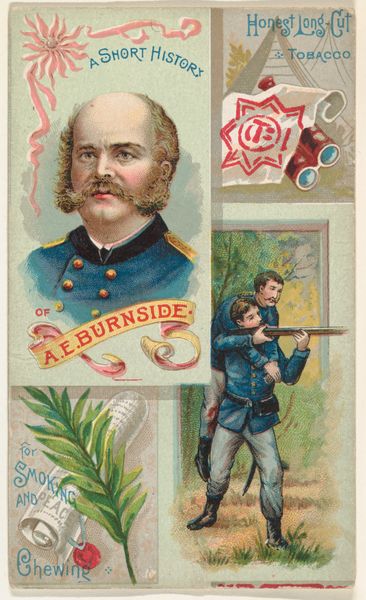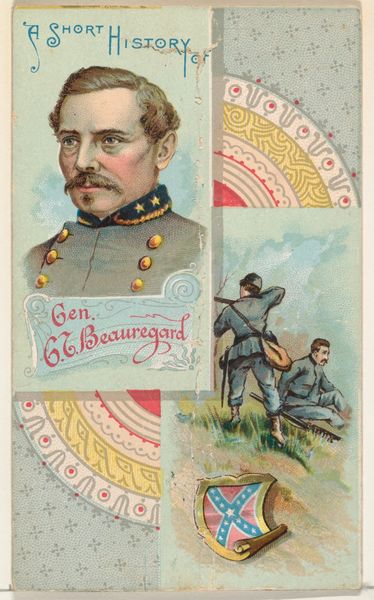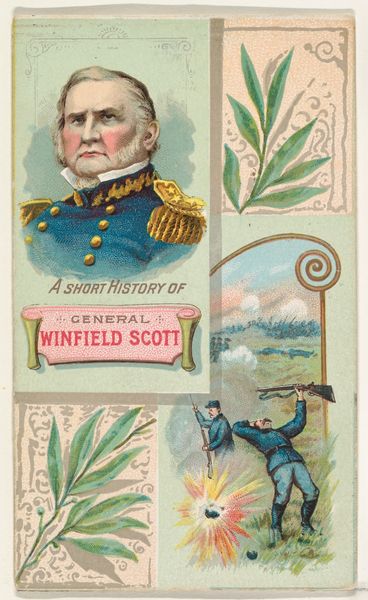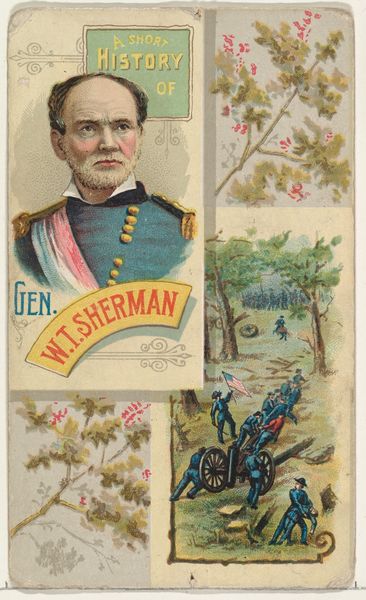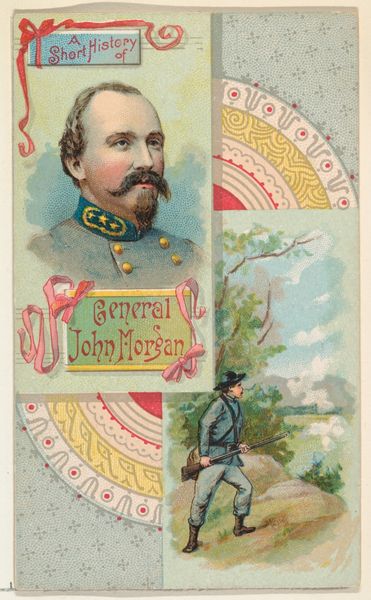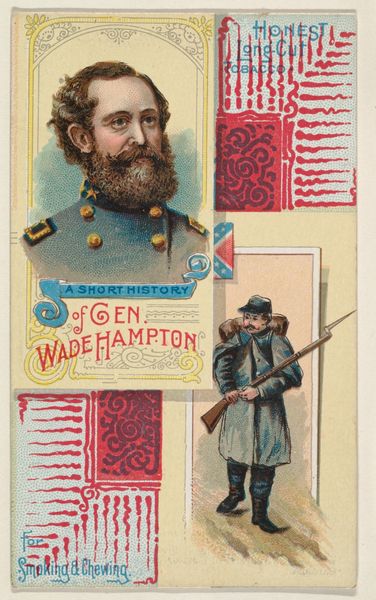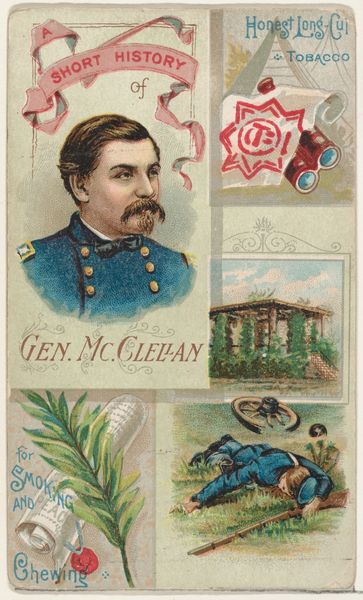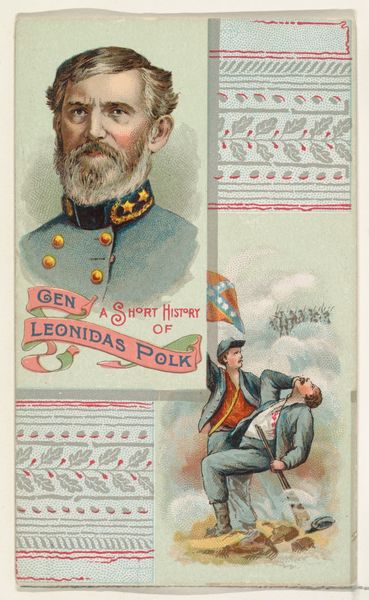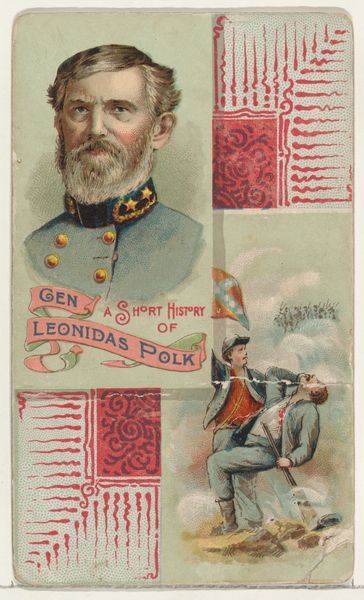
A Short History: General Henry W. Halleck, from the Histories of Generals series (N114) issued by W. Duke, Sons & Co. to promote Honest Long Cut Smoking and Chewing Tobacco 1888
0:00
0:00
drawing, coloured-pencil, print, watercolor
#
portrait
#
drawing
#
coloured-pencil
#
water colours
# print
#
watercolor
#
coloured pencil
#
genre-painting
#
history-painting
#
watercolor
Dimensions: Sheet: 4 3/16 × 2 1/2 in. (10.7 × 6.4 cm)
Copyright: Public Domain
Curator: Here we have a curious piece from 1888. It's a promotional card issued by W. Duke, Sons & Co. for their "Honest Long Cut" tobacco, featuring General Henry W. Halleck. The card uses colored pencils and watercolor print. Editor: It strikes me as a rather unsettling juxtaposition—a military portrait alongside what appears to be a battlefield scene, all packaged as a promotion for tobacco. There's a tension between respectability and a gritty reality. Curator: Absolutely. Note the choices made for mass production and mass appeal; it seems to trivialize war. This tension speaks volumes about the post-Civil War landscape and how such events were consumed and marketed. Editor: The symbolism feels potent. Halleck, in his formal uniform, represents order and authority. Yet below, there's violence. A soldier stands guard over a fallen comrade. It's a stark reminder of the cost of that order, a visual memento mori lurking beneath the advertisement. Curator: And the act of smoking or chewing tobacco might have been associated with these idealized portraits in this context: images that gave some illusion of familiarity for consumers who enjoyed reading stories in newspapers about war heros like Halleck. Editor: It really asks you to consider the intent behind it all: what is the intention? Who is this imagery intended for? I also wonder if the war imagery has roots in earlier symbolism like vanitas, which remind us of human suffering. Curator: And by that logic, what message does it create for new customers about that suffering? Cigarettes will always be associated with leisure. Editor: It highlights how objects, even seemingly disposable ones like trade cards, become carriers of complex cultural meaning. Thank you. Curator: It serves as a reminder of how capitalist structures inevitably intersect with expressions of grief and war heros.
Comments
No comments
Be the first to comment and join the conversation on the ultimate creative platform.

